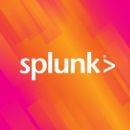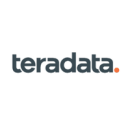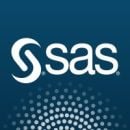These days, running a business effectively means working with lots of data. The problem is, all of this data is hardly ever organized — it’s often siloed into different databases, formatted in different ways and difficult to make sense of. This is where data mining — and data mining companies, by extension — becomes critically important.
Data Mining Companies to Know
- SAP
- Alteryx
- Splunk
- UiPath
- Teradata
- Sisense
- IBM
- Domo
- RapidMiner
What Do Data Mining Companies Do?
Data mining is a process that transforms large amounts of raw data into usable and actionable information. It is a highly advanced data analysis technique, often combining machine learning, artificial intelligence and predictive analytics to identify patterns, extract useful information and assess areas of growth and change.
Companies mine data to increase sales, reduce costs, predict future problems, identify industry trends and much more. It is all dependent on the proper collection, management and analysis of that data. It is also usually paired with data visualizations to help users make sense of the information at hand.
What Do Data Mining Companies Do?
Data mining companies transform large, unstructured data sets into usable and actionable insights. They often utilize machine learning, artificial intelligence and predictive analytics to identify patterns, extract information and make predictions, as well as illustrate their findings with data visualizations.
Of course, parsing through large quantities of raw data, analyzing it and distilling the information in clear and accessible ways can be challenging. These data mining companies have the tools to help businesses large and small succeed.
19 Leading Data Mining Companies
Celonis makes process mining tools that help companies understand and optimize their own workflows. Its digital twin technology draws on any data the company has available to create a representation of how work is done across every business function. From there, users can identify opportunities to streamline their operations or allocate their resources more efficiently.
Notable Features of Celonis:
- Its tools are compatible with any data source, and the digital twin model is continuously updated.
- Celonis translates department-specific information into a standardized format that helps users understand what’s happening across the organization.
- Celonis makes it easier for different departments to collaborate and adopt new tools including artificial intelligence.
Domo is a cloud-based platform that allows companies to extract useful information from all kinds of data and sources, offering industry-specific findings and AI-based predictions. Even when data is scattered across multiple servers like AWS and Salesforce, users can gather it all in one place and use Domo’s drag-and-drop tools to create custom data visualizations as well as share analytics with stakeholders.
Notable Features of Domo:
- Data can be gathered from across a variety of servers.
- Offers drag-and-drop tools to more easily create dashboards.
- Dashboards are interactive, allowing for real-time collaboration across teams.
Among tech behemoth Oracle’s many software and cloud offerings is a data mining tool that allows analysts to uncover meaningful insights in their data and make predictions. Oracle’s data mining product is part of the company’s larger Advanced Analytics tool, which is used for implementing predictive models. It provides several data mining algorithms for tasks like regression, anomaly detection, classification and more. Some of the most common uses for the Oracle data mining tool include predicting customer behavior, detecting online fraud and spotting new selling opportunities.
Notable Features of Oracle Data Mining:
- Provides various data mining algorithms for tasks like regression, anomaly detection, classification and more.
- Includes an interactive workflow tool.
- Common uses include predicting customer behavior, detecting online fraud and spotting new selling opportunities.
IBM’s data mining tool, called the SPSS Modeler, allows users to import vast amounts of data from multiple sources and rearrange it to uncover trends and patterns. The standard version of the tool works only with numerical data, while the premium version includes text analytics capabilities as well. Plus, the platform’s drag-and-drop interface makes it easy for people who lack programming experience to use advanced algorithms and build predictive models with their data.
Notable Features of IBM SPSS Modeler:
- Premium version includes text analytics capabilities in addition to numerical data analytics.
- Drag-and-drop interface makes it easy to build predictive models.
- Can be used for data preparation and discovery, predictive analytics, model management and deployment, as well as machine learning.
Designed specifically for non-technical users, Sisense’s low-code and no-code functionality allows data to be easily organized in visual reports, bar graphs, line charts, scatter plots and any other type of graph. And its APIs allow users to leverage full customization of their data analytics — from the way they are visualized and integrated on the front-end, to the way they are secured and monitored on the back-end. Its AI technology and machine learning models also allow Sisense to identify future business opportunities for its customers.
Notable Features of Sisense:
- Has low-code and no-code functionality for the easy creation of data visualizations.
- Data analytics can be fully customized on the front and back-end.
- Equipped with AI technology and machine learning models.
Splunk is a software-as-a-service platform that helps users to generate real-time data and insights, while managing their infrastructure and security at the same time. The platform allows for the collection of hundreds of terabytes of data from databases, servers and more into one interface. It also allows teams to collaborate across multiple formats, including mobile, TV and even augmented reality.
Notable Features of Splunk:
- Is a SaaS platform, meaning it requires no installation to use
- Mostly serves clients in the IT, cybersecurity, Internet of Things and data analytics sectors.
- Allows teams to collaborate across multiple formats, including augmented reality.
While Teradata’s data analytics software works with several third-party services, it can also be combined with its own cloud storage platform, allowing for better synergy between its cloud hardware, machine learning and other capabilities. The company also offers a suite of data mining services, which allows users to better manage and analyze their data. And, because of its scalability, Teradata can adapt to not only very large data sets, but also different kinds of data.
Notable Features of Teradata:
- Has its own cloud storage platform.
- Can adapt to all different kinds of data, in large quantities.
- Integrates with common third-party tools and languages, allowing users to run their own analyses without having to learn new software.
By fusing machine learning, data analytics and visualizations, CB Insights helps companies get a better understanding of their business, their industry and their future by mining data across a variety of touchpoints and making predictions based on that. It also provides companies with granular insights into specific areas of growth and decline to be aware of, including upcoming industry trends and potential competitors.
Notable Features of CB Insights:
- Capable of mining data across a variety of touchpoints.
- Offers industry and market data visualizations.
- Provides granular insights into specific industry trends, potential competitors and more.
Unlike a lot of other companies on this list, Knime’s services are free. The platform is for data mining and machine learning, offering data science software that helps businesses interpret their data and make predictions from it. Its pre-built components allow for fast modeling without having to write a single line of code. And its various extensions and integrations allow users to process complex types of data and use advanced algorithms.
Notable Features of Knime:
- Free to use.
- Allows users to easily access, merge and transform their data into models and visualizations.
- Has various extensions for handling complex data types and advanced algorithms.
SAP SE enables companies to gather data from their daily operations and run various different data mining models on it. Some data mining methods supported by the platform include clustering, decision trees, classification and score tables. The company focuses on several business operations, including supply chain management, spend management and sustainability management.
Notable Features of SAP SE:
- Supports clustering, decision trees, classification and score tables.
- Focuses many business operations, including supply chain management, spend management and sustainability management.
- Capable of running transactions and analytics on multi-model data at petabyte scale.
The Alteryx platform is meant for both data scientists and business analysts alike, allowing multiple teams to parse through data from across their organization and gather insights from it. Its suite of tools makes it easy for users to prep and analyze their data, as well as deploy R or Python code within the platform for faster predictive analytics. Alteryx also incorporates machine learning principles to identify patterns in the data and create forecasting data models.
Notable Features of Alteryx:
- Allows users to build forecasting data models with machine learning.
- Removes the busy work of the data prep and analytics processes.
- Users can deploy R and Python code within the platform to allow for quicker predictive analytics.
RapidMiner is a free, open source platform that works to unify the entire data science life cycle, from data preparation to model development. It features hundreds of algorithms for everything from machine learning and deep learning, to text mining and predictive analytics. Programmers can also use the platform’s R and Python extensions to tailor their data mining needs. Once a user has created a workflow and analyzed their data, RapidMiner also lets them visualize their results, allowing them to spot patterns, outliers and trends in the data.
Notable Features of RapidMiner:
- Is an open source platform.
- Features hundreds of algorithms for everything from machine learning and deep learning, to text mining and predictive analytics.
- Has a large and active community of users that will answer questions.
SAS Enterprise Miner’s data mining features allow for data prep and exploratory analyses, all while producing granular reports and summaries of the findings. Its interactive, self-documenting visualizations map the entire data mining process, and all analytics results are displayed in clear and concise charts that provide insights for better decision making. The platform also automatically generates scoring code for all stages of model deployment, eliminating the potentially costly errors of manually rewriting and converting code.
Notable Features of SAS Enterprise Miner:
- Provides interactive, self-documenting data visualizations.
- Offers secure cloud integration and code scoring.
- Model predictions and assessments can be verified with visual assessment and validation metrics
UiPath is a robotic process automation company that helps companies become more fully automated. Using a technique called process mining, the platform uses a given company’s data to give them a detailed understanding of their complex business process, as well as an idea of areas where they can automate and improve their processes. It also performs something called task mining, where it gathers information about how all employees work, analyzing it and identifying areas where their work can be automated. Finally, in a process called communications mining, UiPath monitors all business communication, from internal emails to customer requests, and turns those messages into actionable data that can then be used to automate those communications.
Notable Features of UiPath:
- Analyses companies’ data to identify areas of improvement in business operations.
- Gathers data on how employees work and identifies areas where their work can be automated.
- Uses AI to automate business communication.
The Apache Software Foundation is a non-profit that focuses on creating open source software projects, including Apache Mahout, which creates scalable applications with machine learning. With a particular focus on recommender engines, clustering and classification, the software is designed to take on complex, large-scale data mining projects.
Notable Features of Apache Mahout:
- Ideal for complex, large-scale data mining projects.
- Focuses on recommender engines, clustering and classification data mining techniques.
- Is an open source platform.
At the center of Dataiku is what the company calls “Everyday AI” — technology that helps teams across an entire organization better understand their data so they are equipped to handle everything from supply chain optimization to fraud detection. Its Data Science Studio is capable of converting raw data into actionable insights, while integrating into an organization’s existing infrastructure. Typically, managing and analyzing data in this way requires the expertise of trained data scientists, but the platform’s use of artificial intelligence makes it possible for even non-technical users.
Notable Features of Dataiku:
- Converts raw data into actionable insights, while integrating into an organization’s existing infrastructure.
- Uses artificial intelligence to help companies make sense of their data.
- Designed to be easy to use for even non-technical users.
Dundas BI is a business intelligence and analytics company that helps mid-to-large size enterprises and software vendors create dashboards, reports and data visualizations from their raw data. Dashboards can be made in a variety of layouts for optimized data-driven decision-making, and visualizations can be customized into interactive charts, gauges, maps, scorecards and more. Dundas BI also has a notes feature that allows users to post comments or questions pertaining to specific data points.
Notable Features of Dundas:
- Raw data can be visually transformed into dashboards, reports and visual analytics.
- Data visualizations and dashboards can be easily customized.
- Users can leave notes such as questions or comments pertaining to specific data points.
H2O.ai is an open source predictive analytics tool that uses AI and machine learning technology to help companies build and scale data models in order to forecast future trends. It supports most common ML algorithms, including time series forecasting and regression, as well as automated machine learning functionality to help users build and deploy their models quickly, even if they are not experts. It also uses distributed in-memory computing, making it ideal for parsing especially large huge data sets.
Notable Features of H2O.ai:
- Scalable and flexible due to its open source nature.
- Supports most common ML algorithms.
- Has automated machine learning functionality.
Hitachi Vantara’s data integration and analytics platform doesn’t require any hand coding, and instead offers functions like drag-and-drop integration, pre-made data transformation templates and metadata injection. Once users add their data to the platform, it can mine any business intelligence from any data format thanks to its data-agnostic design. The company also focuses on being environmentally conscious, and offers a variety of sustainable data storage and optimization solutions.
Notable Features of Hitachi Vantara:
- Offers drag-and-drop integration, pre-made data transformation templates and metadata injection.
- Has a data-agnostic design.
- Offers a variety of sustainable data storage and optimization solutions.
MonkeyLearn is a machine learning company that specializes in text mining. Its simple interface allows users to create customized text classification and extraction analysis with pre-trained ML models like sentiment analysis, topic detection and keyword extraction. Users can also build and train their own models.
Notable Features of MonkeyLearn:
- Focuses specifically on text data mining.
- Supports various data mining tasks, including topic detection, sentiment analysis and keyword extraction.
- Offers instant data visualizations and detailed insights on data.
Frequently Asked Questions
Who is the largest data miner?
IBM and Oracle are some of the largest data miners in operation.
What do data mining companies do?
Data mining companies organize, analyze and transform large amounts of raw data into usable, actionable information to help make data-related decisions.
How do companies use data mining?
Companies use data mining to extract meaningful patterns and trends from sets of unstructured data. These findings are used to increase sales, reduce costs, predict future problems or identify areas for business improvement.















